Timisoara is one of the largest cities in western Romania, located in the Banat region, not far from the borders with Hungary and Serbia. The city is well connected to the rest of the country, with the A1 highway just a short distance away, making travel by car easy and convenient.
Timisoara also has a well-developed railway system, offering both domestic and international connections, making it accessible for travelers coming from different parts of Europe.
Here are some of the amazing places I visited in Timisoara that I highly recommend!
The Victory Square
The Victory Square is located in the middle of Timisoara. The most emblematic buildings in this square are the National Opera and on the opposite side of the square is the large Orthodox Metropolitan Cathedral with a height over 90 m. As an interesting fact, the Metropolitan Cathedral is the second tallest church in Romania after the recently built cathedral in Bucharest.
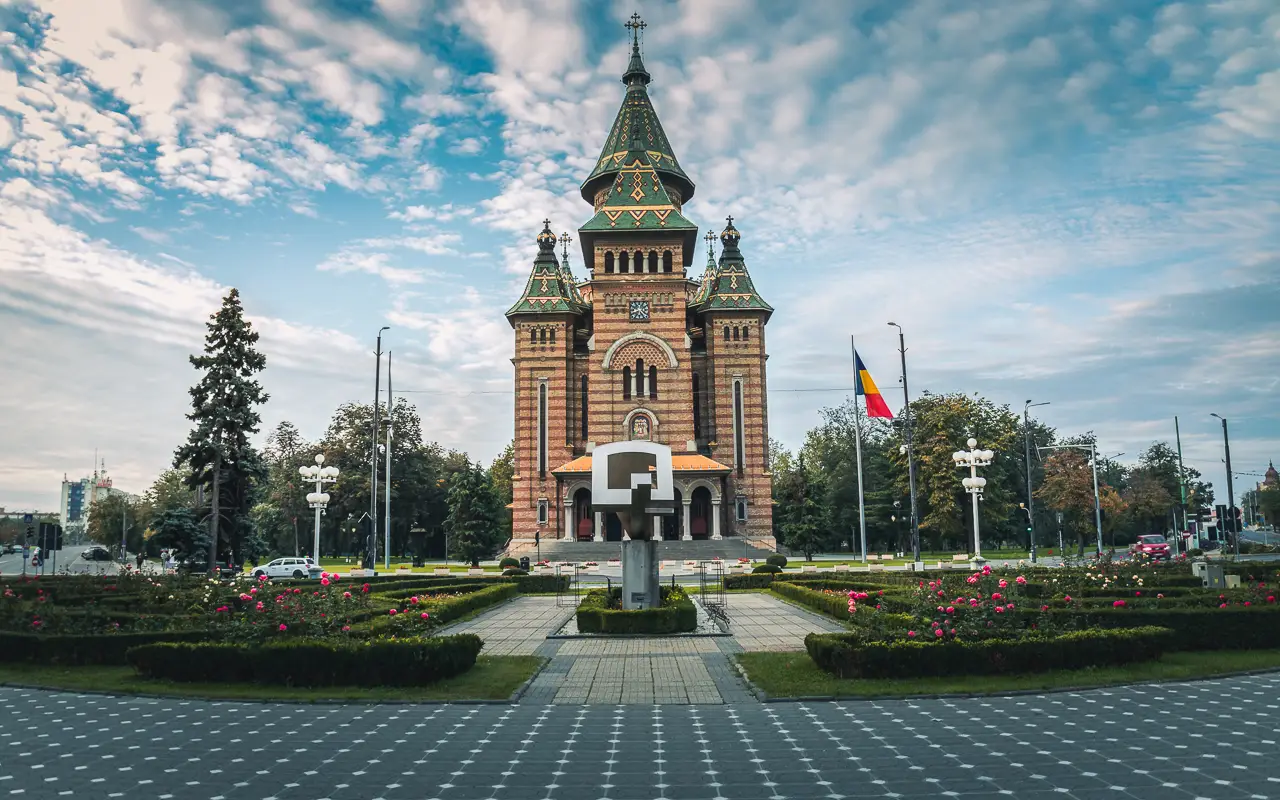
This square played an important role in the history of this city because in December 1989 many protest were held against the communist regime and against the former communist president of Romania Nicolae Ceausescu. On 20 December 1989, from the Victory square, Timisoara was proclaimed the first city freed from communism in Romania.
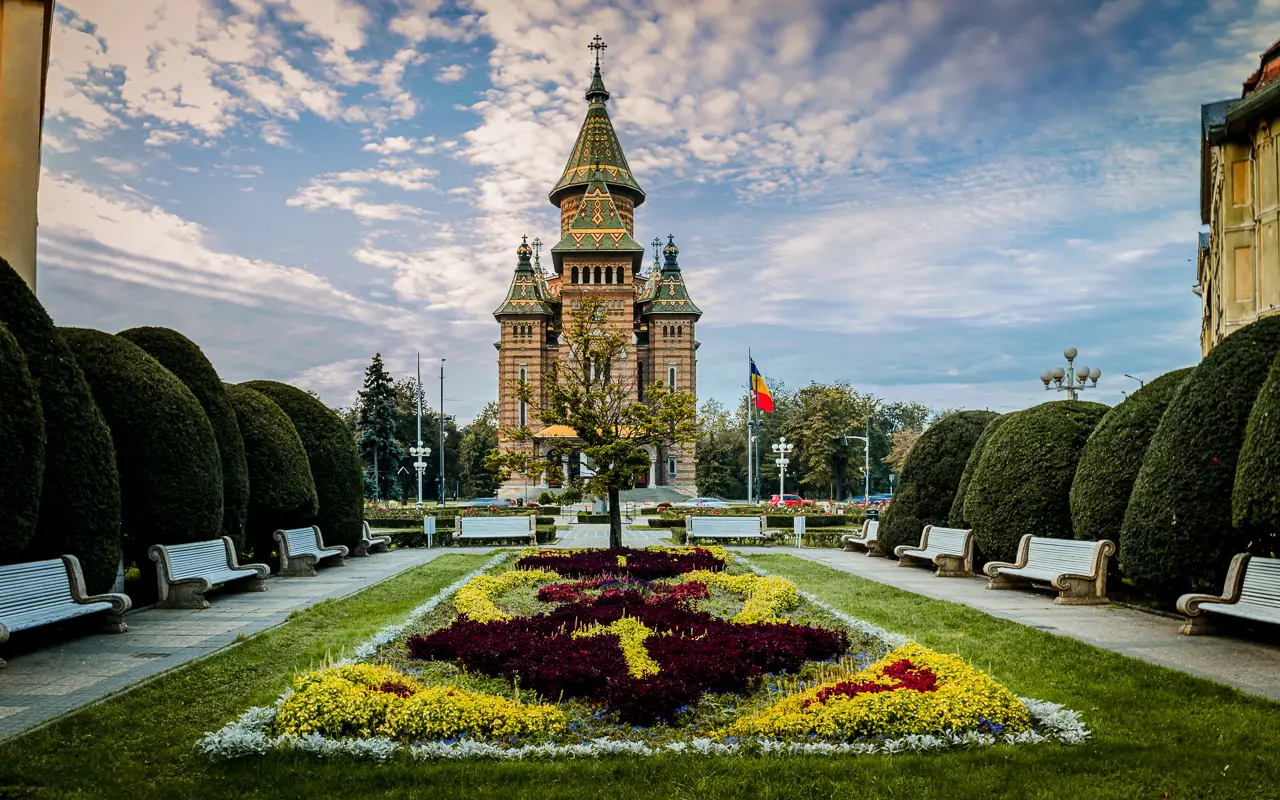
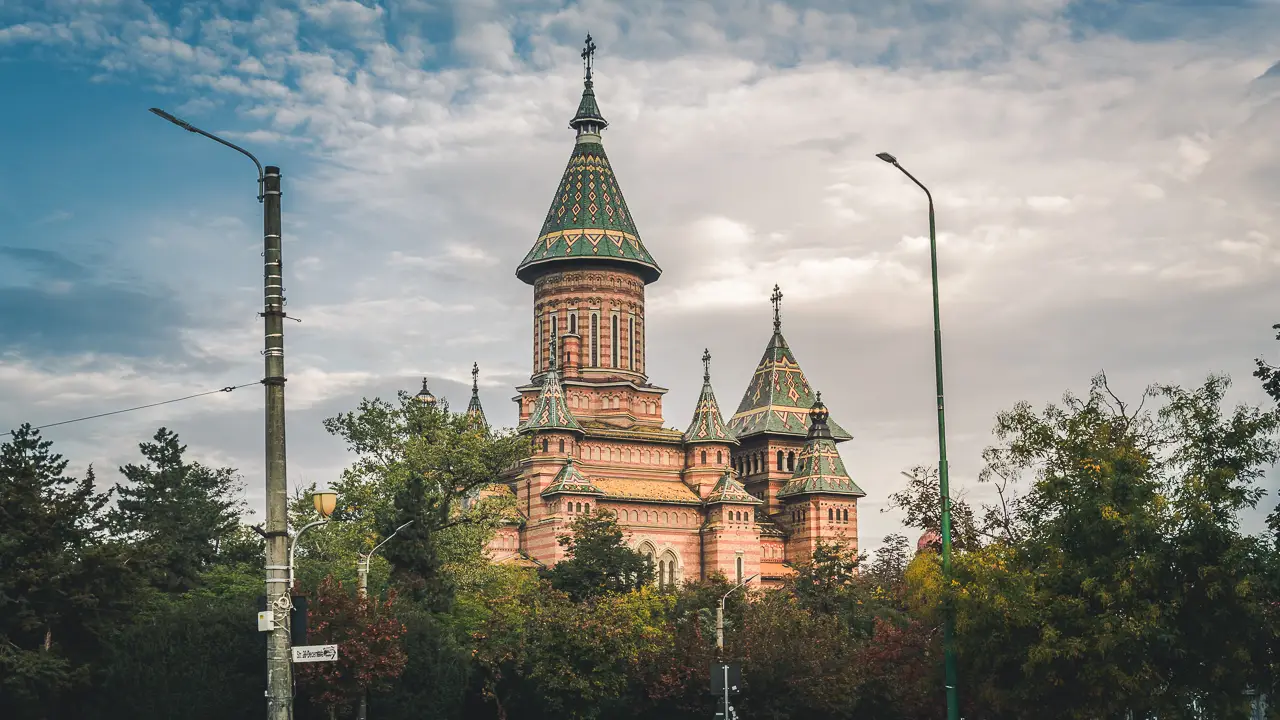


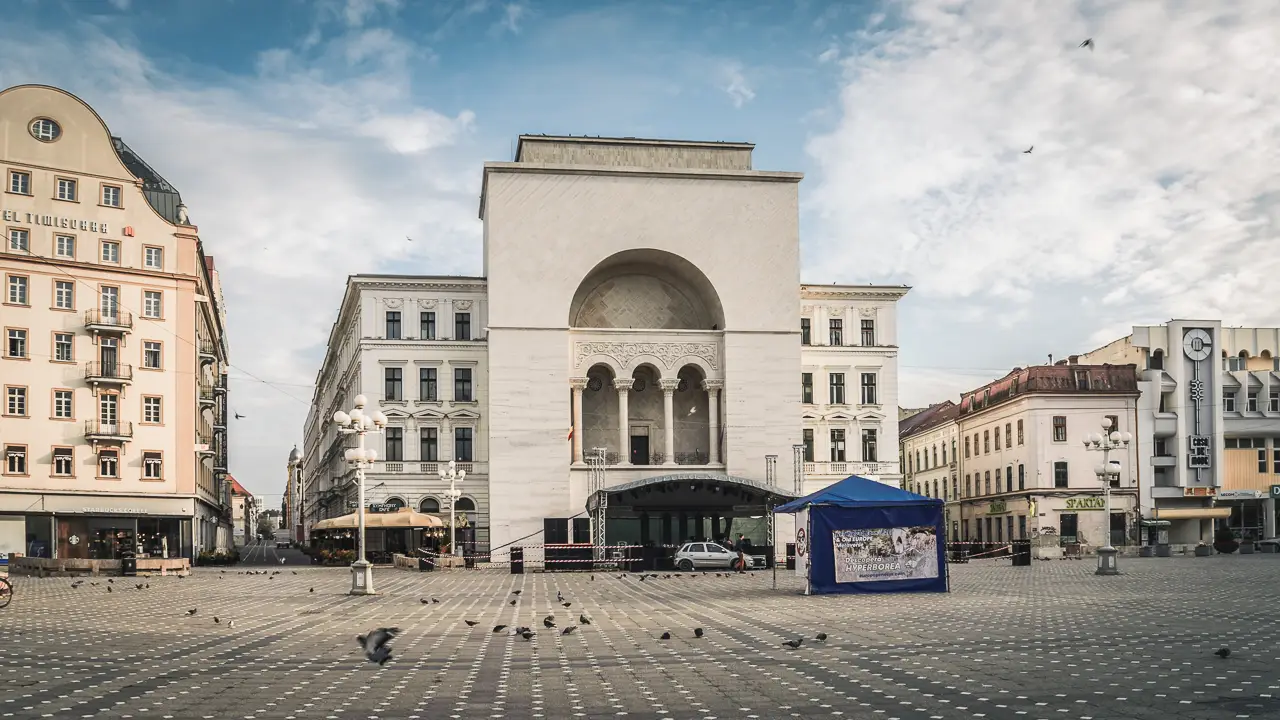
The Bega Canal
Not far from Victory Square, behind the Orthodox Metropolitan Cathedral, you’ll find the Bega Canal, which flows through the city and almost splits it in two.
Exploring the city by vaporetto is a wonderful experience, offering a unique and relaxing way to see the sights from the water.
Important tip: For more details on the vaporetto schedule and departure stations, check here: http://stpt.ro/Orare/orare.html
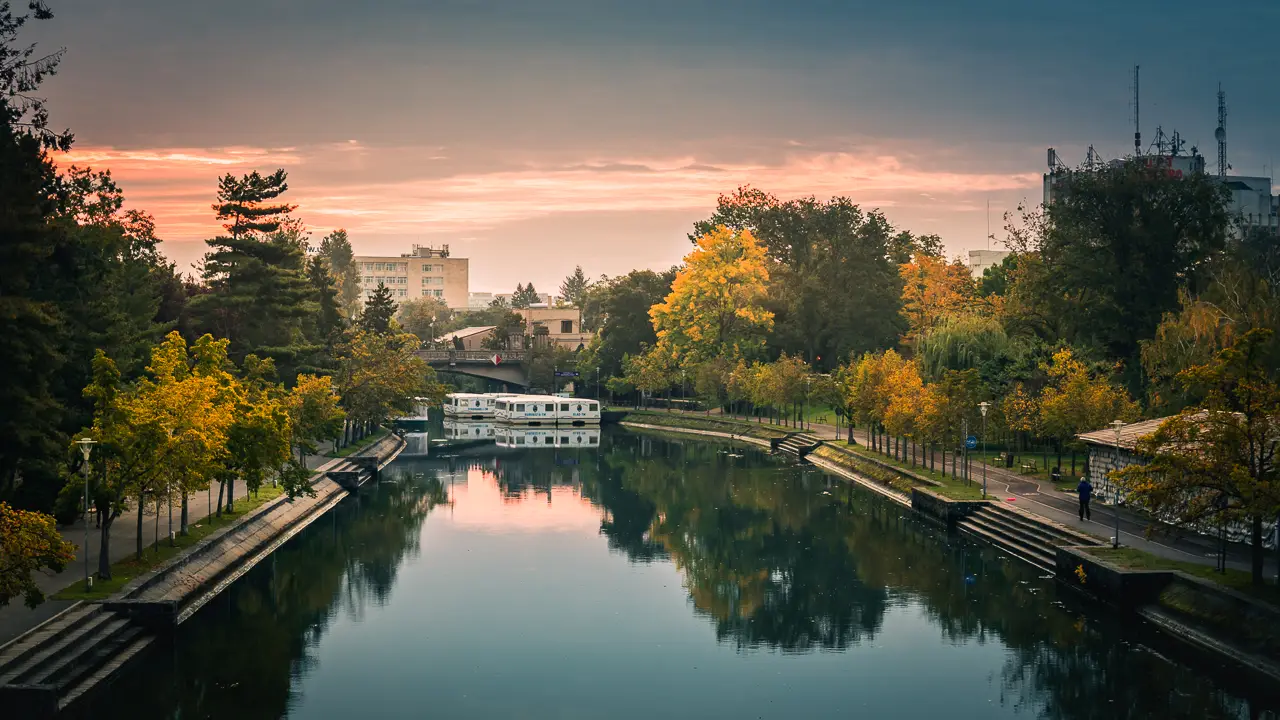
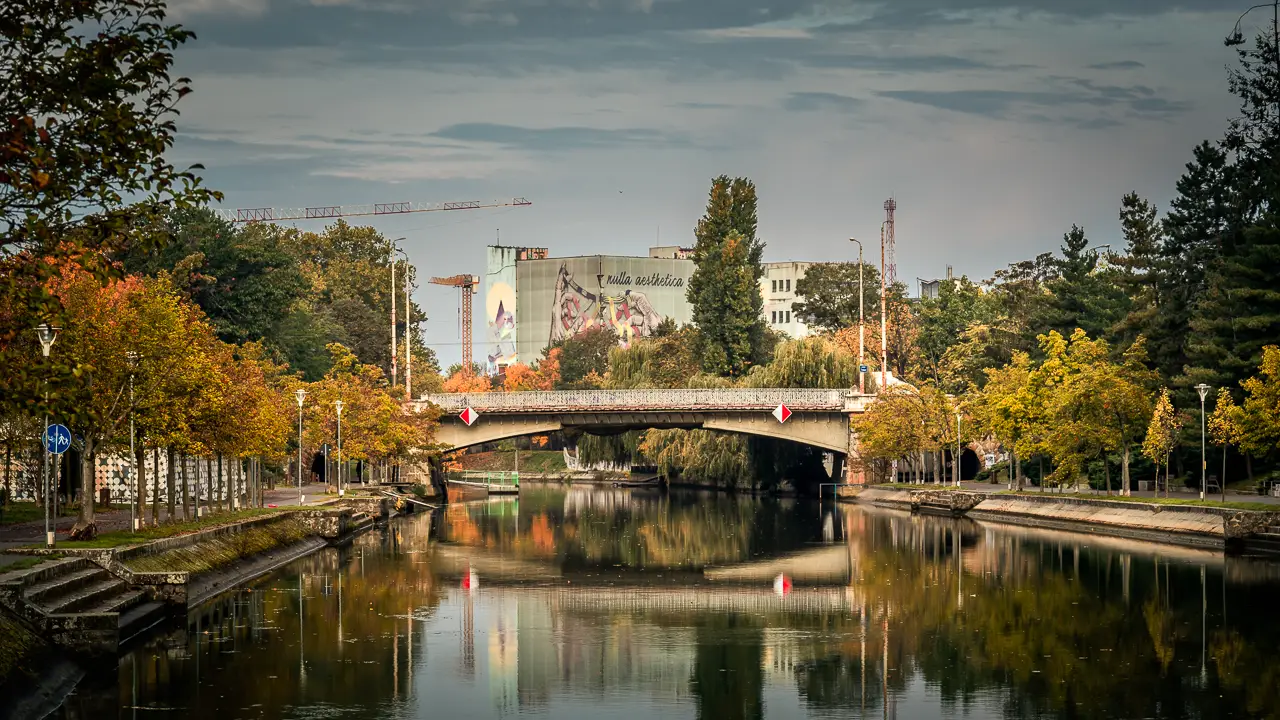


The Union Square
Timisoara, a city with a rich history and a vibrant cultural scene, boasts numerous landmarks that tell the tale of its past and present. Among these, Unirii Square or Union Square stands out as a bustling hub that encapsulates the spirit of Timisoara. This historic square, located in the heart of the city, serves as a focal point for both locals and visitors, offering a unique blend of history, culture, and modernity.

St. George Cathedral
The St. George Cathedral (also known as the Dome Cathedral) in Timisoara, located in the historic center of the city, is one of the most impressive religious constructions in western Romania. The Baroque-style building was constructed between 1736 and 1774 and is dedicated to St. George.
The St. George Cathedral represents a significant symbol of local history and culture, attracting numerous visitors eager to explore the rich architectural heritage of Timisoara. This is the only place in Timisoara where you will find two cathedrals very close to each other, I’m referring to the Roman Catholic Cathedral and to the Serbian Orthodox Cathedral.


The fountain in Union Square
Right behind the statue of the Holy Trinity there is a smaller fountain with drinkable water which is perfect especially if you visit this place on a hot summer day.

The Baroque Palace
Situated in Union Square, the Baroque Palace is a notable architectural gem that showcases the Baroque style’s elegance. Today, it houses Timisoara’s National Museum of Art. The building’s ornate facade and historical significance make it a prominent landmark.


The Brück House
A striking example of Art Nouveau architecture, the Brück House is located on the eastern side of Union Square. Designed by architect Laszlo Székely, the building features Hungarian folklore motifs and intricate details that exemplify the Art Nouveau aesthetic. The Brück House adds a touch of modernity and artistic flair to Union Square, standing out as a testament to the city’s architectural diversity.
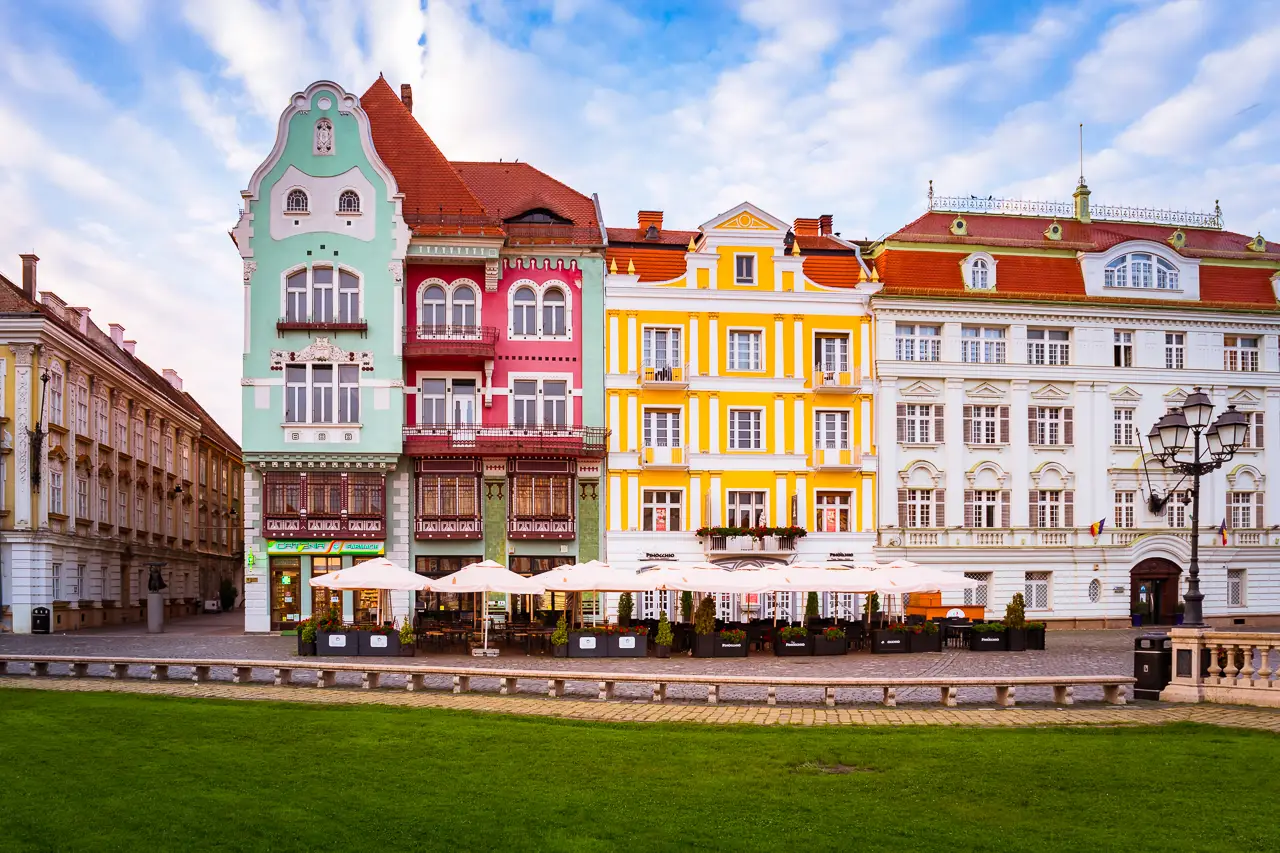
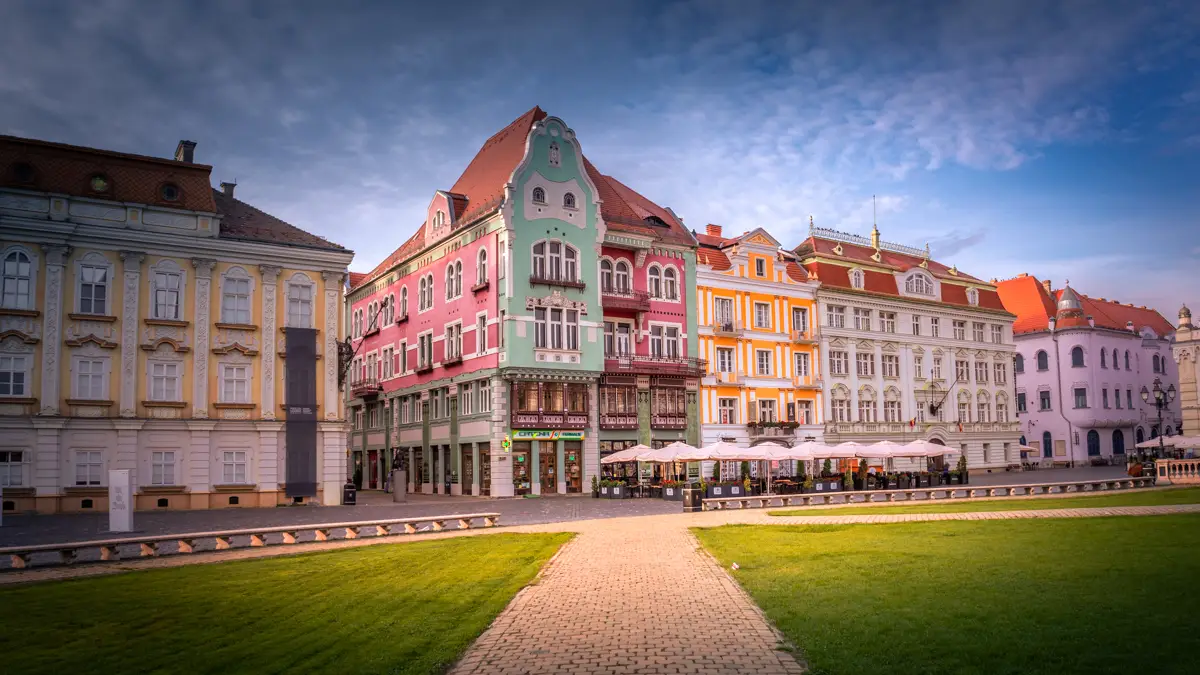
The Serbian Orthodox Episcopate and the Cathedral
Constructed concurrently with the Episcopal Palace, the Serbian Orthodox Cathedral, devoted to the Ascension of the Lord, was finalized in 1748, a fact substantiated by an inscription preserved within its walls. Exhibiting Baroque architectural style, the church has predominantly preserved its authentic form from the 18th century.
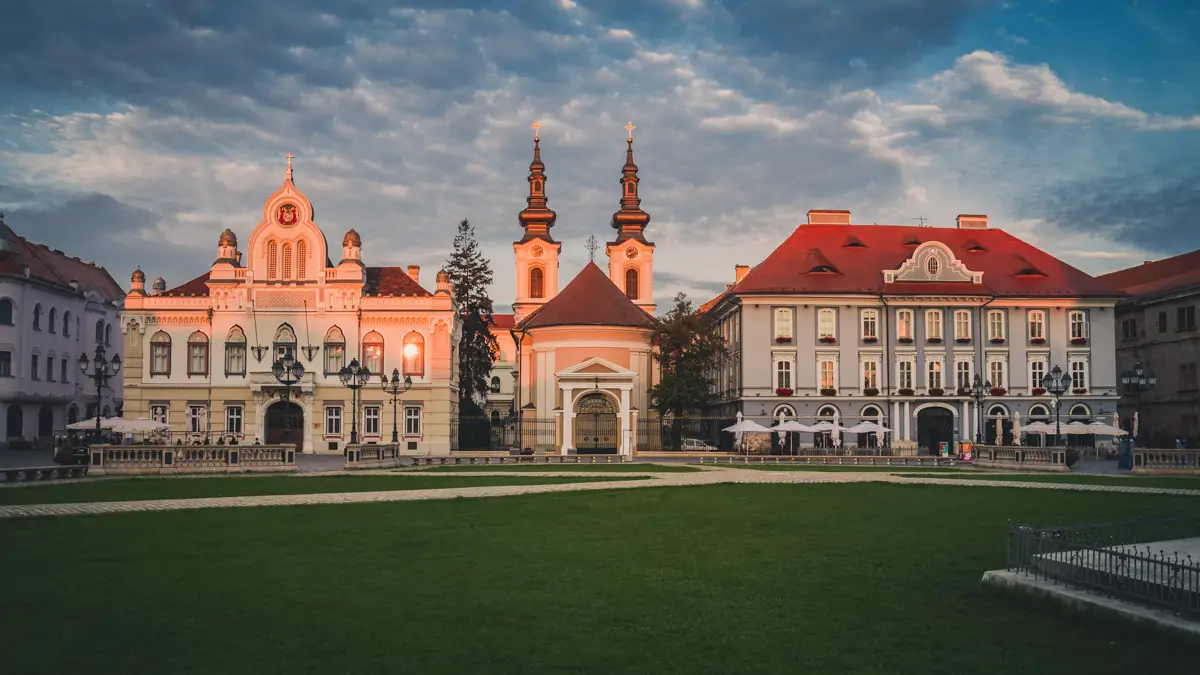
Miksa Steiner Palace
Miksa Steiner Palace stands as a historic edifice constructed in the latter part of the 19th century. Renowned for its remarkable architecture, the palace mirrors the eclectic style characteristic of that era. Named in honor of its initial proprietor, Miksa Steiner, an affluent industrialist and philanthropist, the palace holds a significant place in the city’s history. This building is located between the La Elefant House and the Serbian Orthodox Episcopate.

The Holy Trinity statue
Right in the middle of the Union Square you will find the Holy Trinity statue which is also known as the Plague statue. This statue was built in remembrance of the plague which devastated the Banat region in the 18th century.


Besides the old buildings located in Union Square, here you will also gonna find many restaurants, terraces and bars.
The Liberty Square
Liberty Square is a special place in Timisoara. It can be found between two other important squares: Victory Square and Union Square. If you’re starting from Victory Square, which is right at the heart of the city, you’ll need to take a stroll down Alba Iulia Street, which runs alongside the Opera House. Just follow that street, and before you know it, you’ll find yourself right in Liberty Square.
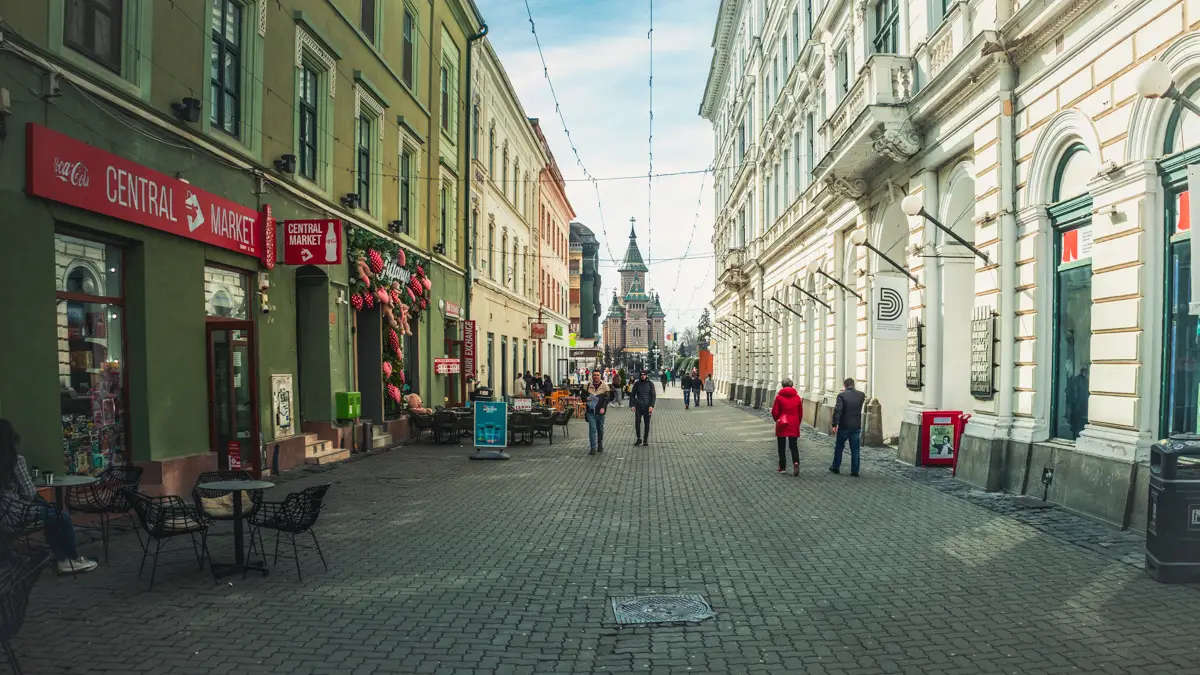

When you reach Liberty Square, you’ll discover a lovely place that got a makeover a few years back. Honestly, it looks even better now than it did before the renovations. The improvements really make it shine!
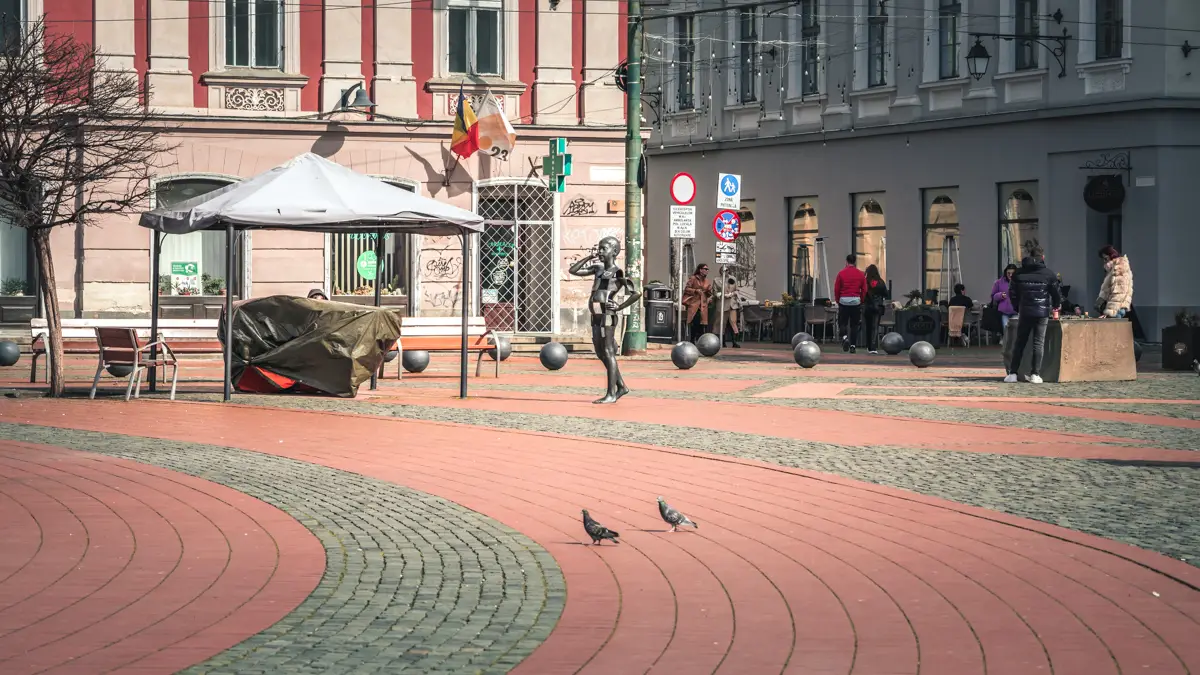
One of the best things about Liberty Square is its mix of old buildings. Liberty Square is always buzzing with activity. You might see street performers showing off their skills or markets selling handmade crafts. There are often concerts and festivals happening, too. And if you’re hungry, there are plenty of cafes and restaurants to grab a bite and soak in the atmosphere.
Almost in the middle of the square you will find the monument of St. Mary which which is dedicated to the Hungarian revolution and liberation war of 1848–1849 and right behind he monument, there is the Faculty of Music and Theater.
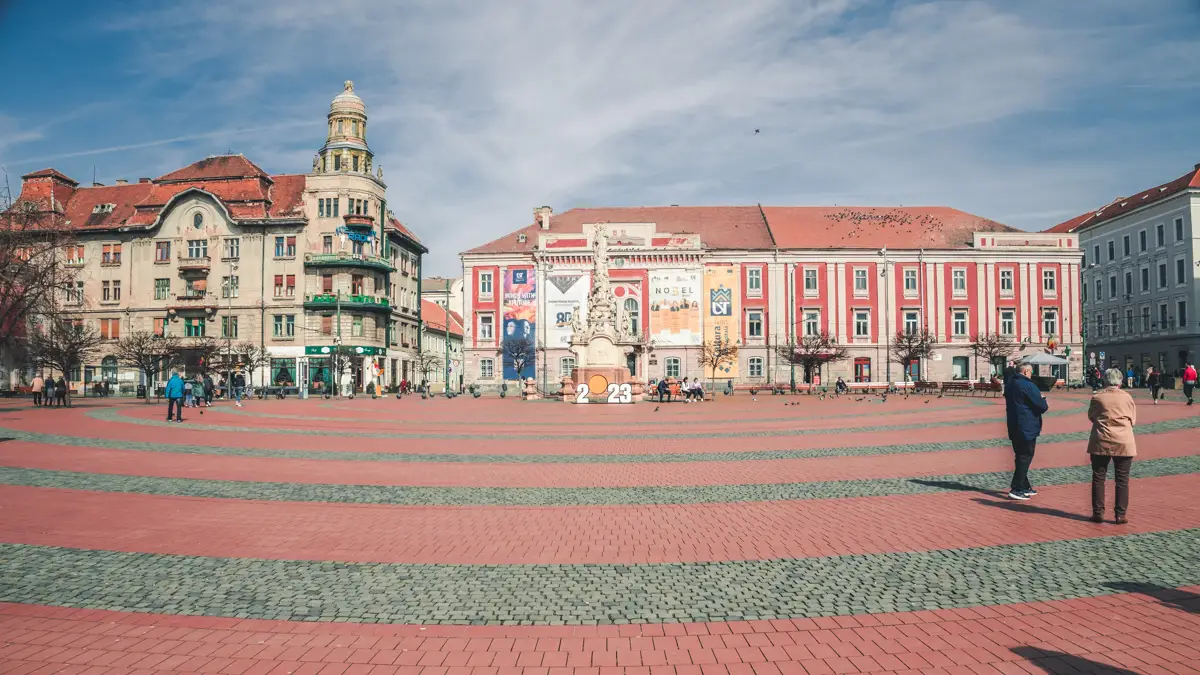
Back in 2015, Liberty Square went through a major makeover as part of a revamp project in the Cetate district. The square got a whole new look with red brick laid out in neat circles, giving it a fresh and inviting vibe. It was like giving an old friend a stylish makeover, making it more attractive and vibrant for everyone to enjoy.
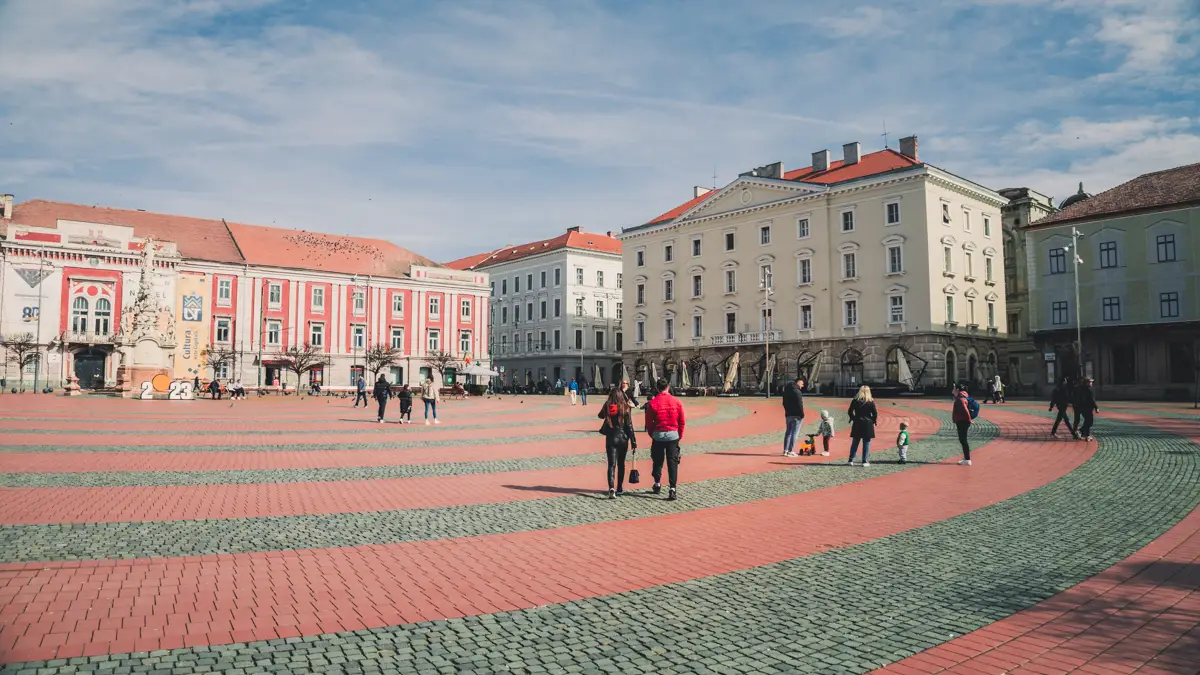

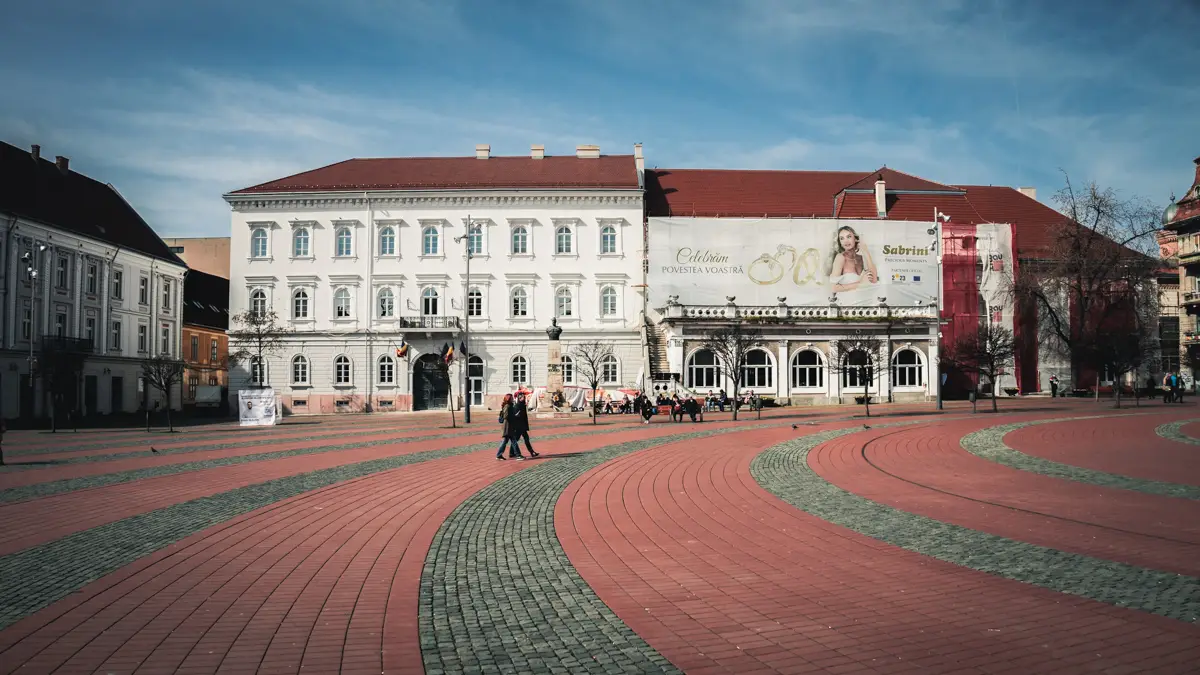

Explore other parts of Timisoara
If you want to explore more of Timisoara, you can hop on a tram from Liberty Square. You’ll spot the tram station right next to the Palace of Agriculture Banc.
Timisoara has a really good transportation system, so it’s pretty easy to get around to different parts of the city. Just catch a tram from here, and you’re good to go to wherever you want in the city! A couple of years ago, brand new tram arrived in Timisoara which were built by the Turkish company Bozankaya.
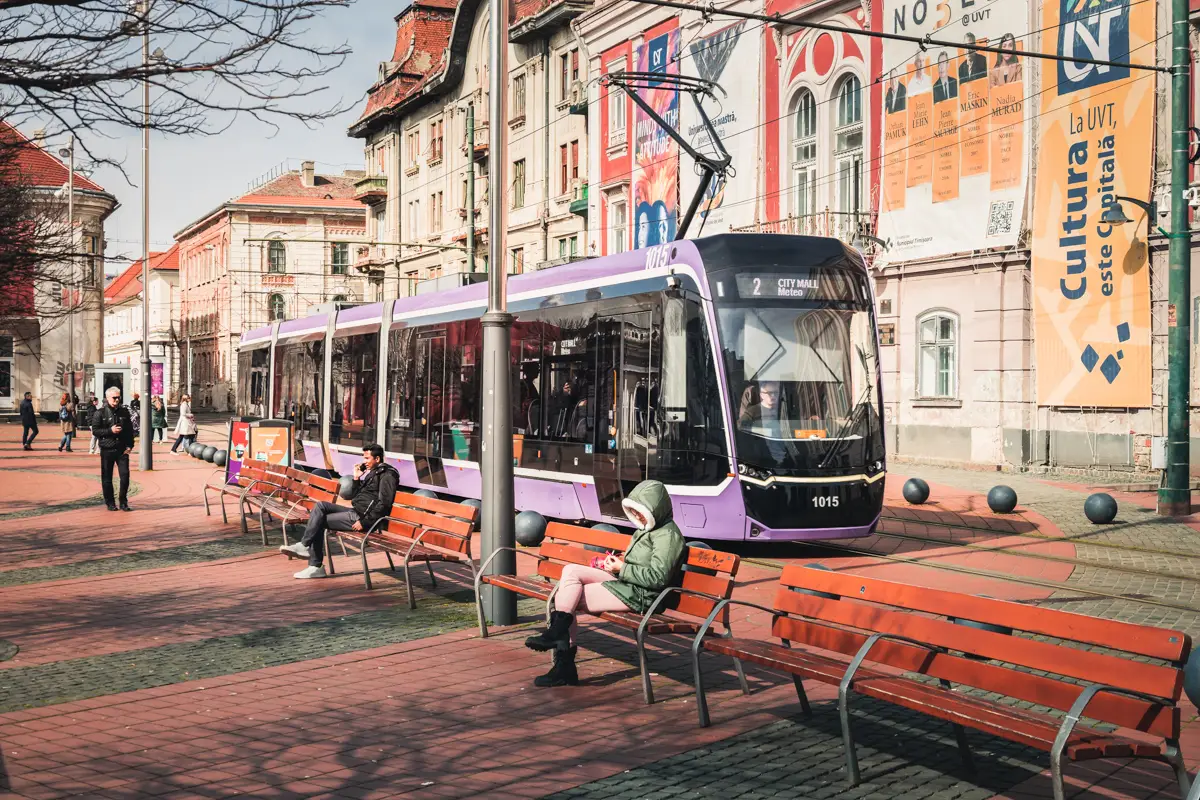
Saint George Square
Near Liberty Square in Timisoara, there is a smaller and lesser-known square called Saint George Square. This charming spot holds historical significance, as it is home to the ruins of an old mosque built by the Ottomans during their rule over the region.
As you walk towards the tram tracks, you will come across a statue of Saint George. This statue stands as an important landmark.
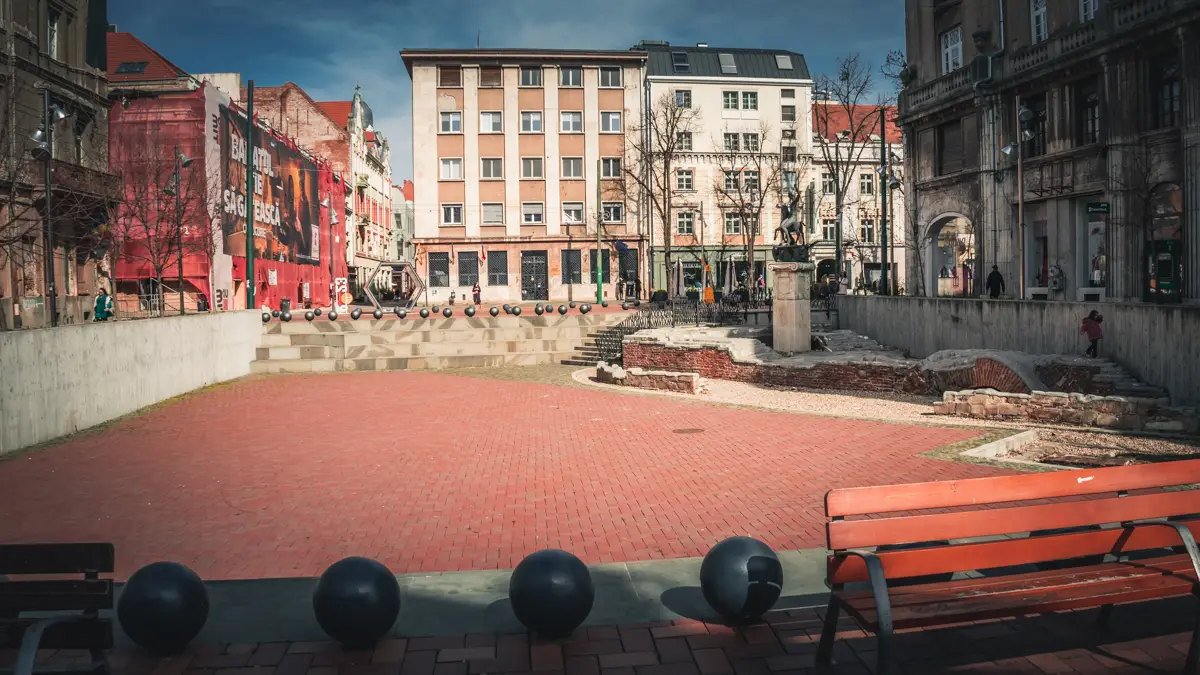
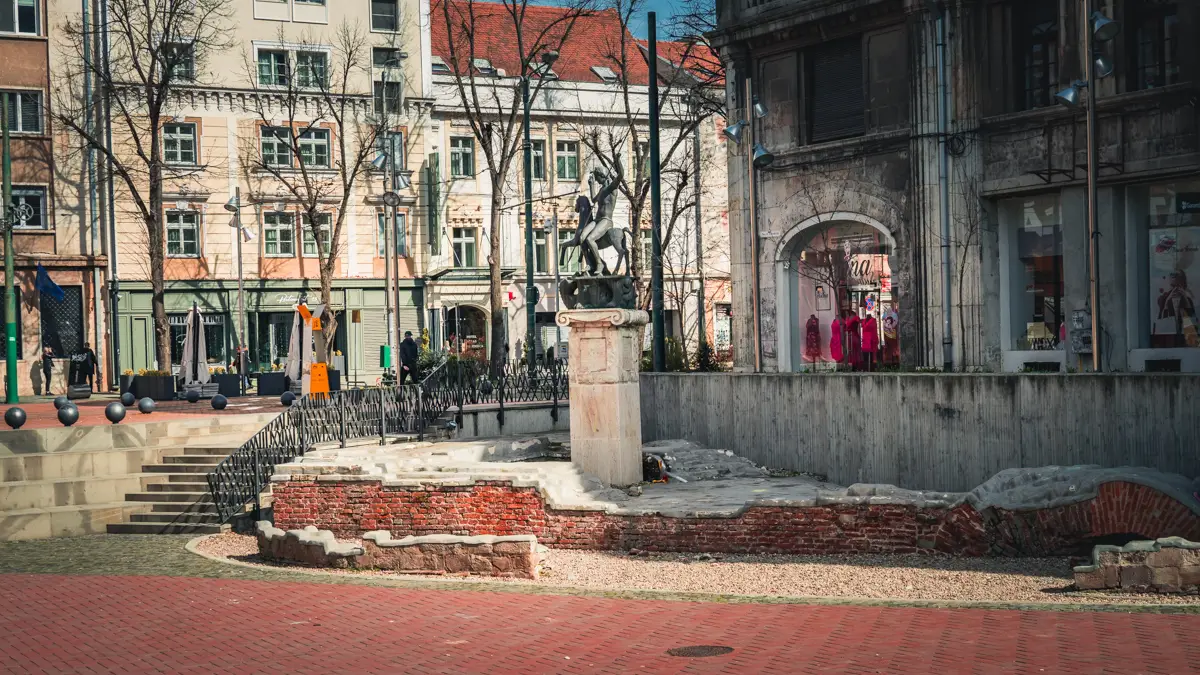
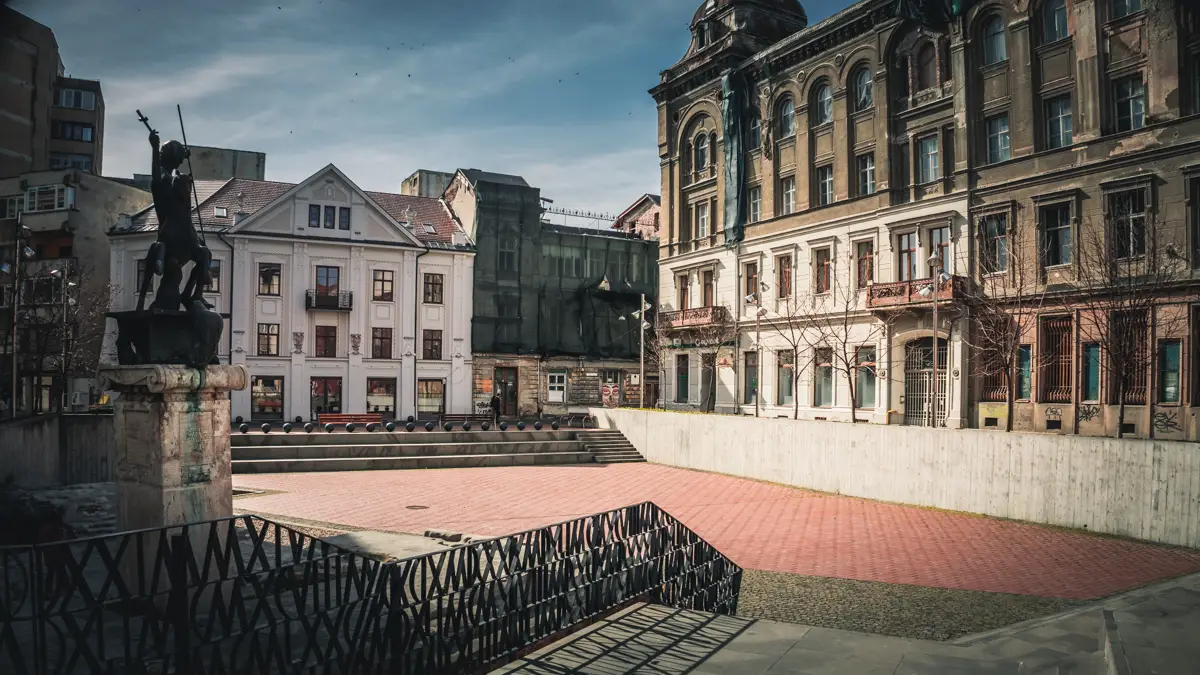
What else can you visit near Timisoara
- Charlottenburg (Sarlota) – This is Romania’s only circular village, a unique and rare sight! It is located about 40 km from Timisoara and is known for its round shape, which was carefully designed by its original German settlers. A visit here offers a glimpse into history and a chance to admire this architectural curiosity.
- Buzias – This charming small town, about 30 km from Timisoara, is famous for its beautiful Dendrological Park, home to a rich variety of trees and plants. Buzias is also well-known for its mineral water, which has been enjoyed for its health benefits for centuries.
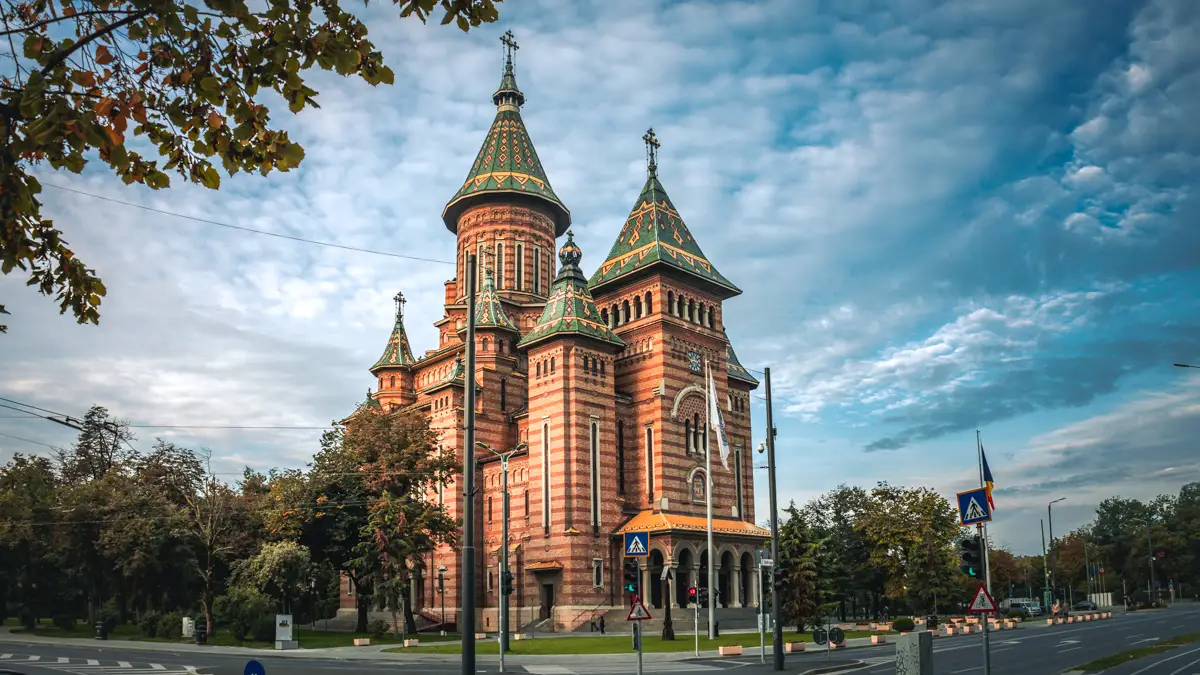
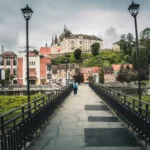


Leave a Reply